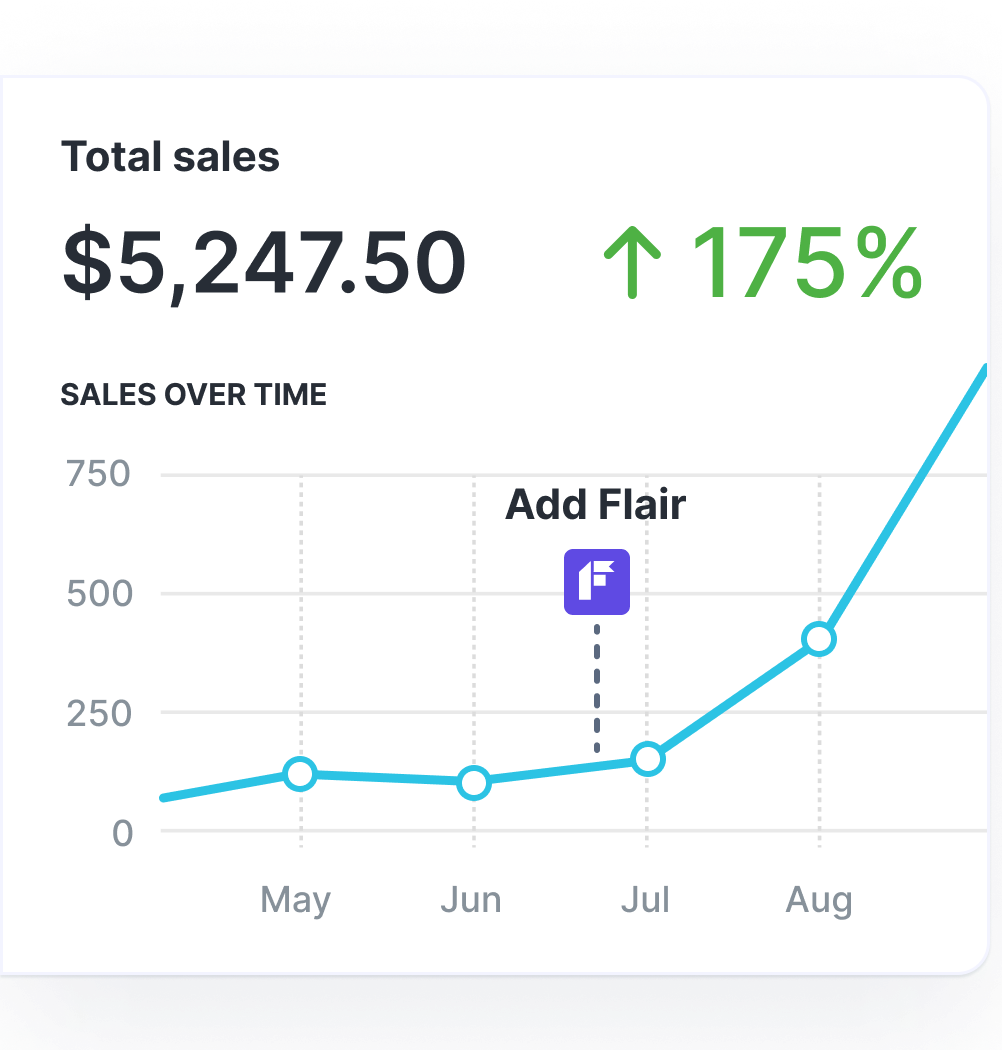Affiliate Marketing vs Dropshipping: Which One is Better?

We live in the age of the side hustle.
Two in five Americans had some sort of additional earning stream alongside their “regular” job in 2022, up from one in three in 2020, according to Zapier. What’s more, 36% started — or planned to start — a side hustle in 2022, versus 24% in 2021.
With their low barriers to entry and potential for big returns, dropshipping and affiliate marketing are two of the most popular “flavors” of side hustle.
But which is best?
In this article, we’ll weigh up the pros and cons of affiliate marketing and dropshipping, then help you figure out which is right for you…
Dropshipping vs. Affiliate Marketing [Comparison Table]
| Dropshipping | Affiliate Marketing | |
| Requires your own e-commerce store | ✅ | ❌ |
| Immediate payment | ✅ | ❌ |
| Pays a fixed rate per conversion | ❌ | ✅ |
| Passive income stream | ❌ | ✅ |
| Set your own prices | ✅ | ❌ |
| No customer support | ❌ | ✅ |
| Fulfillment handled by a third party | ✅ | ✅ |
| Low startup costs and overheads | ✅ | ✅ |
What Is Dropshipping?
Dropshipping is a form of retail fulfillment in which the seller (AKA the dropshipper) acts as a middleman between a third-party supplier and the paying customer:
- The dropshipper runs a storefront selling products
- The customer buys a product from the dropshipper
- The supplier ships the product to the customer, on behalf of the dropshipper, after the order is placed
The dropshipper’s profit margin is the difference between the retail price they set on their store and the supplier’s wholesale price, minus any other overheads.
Pro tip: For a more in-depth answer (and tips on how to start a dropshipping business), check out our guide: What Is Dropshipping and How Does It Work?
Dropshipping Pros
Low Risk
Because your suppliers handle all the stock, there’s not too much that can go wrong with dropshipping.
Even if you never sell a single product, all you’ll have spent is the cost of building and promoting a website. Whereas with a “traditional” e-commerce store, you’d have to invest in a bunch of products upfront — and if they don’t sell, you’re stuck with them.
(That said, you can still be sued for copyright infringements and prosecuted under consumer protection laws, so it’s not totally risk-free.)
Low Overhead
With no warehousing or shipping costs, dropshippers enjoy minimal overheads. Unless you insist on running your dropshipping business from a fancy office or employing a team of staff, you only need to cover the costs of maintaining your e-commerce store and driving traffic to it.
Shopify’s Basic plan is priced at $39 per month — or $29 per month when you pay annually — so you won’t have to sell much to turn a profit.
Broad Product Offering
While most successful dropshippers target a specific niche, you can basically sell anything via a dropshipping store — you just need to find a supplier who’ll ship it for you.
Directories like Worldwide Brands and SaleHoo and marketplaces like Alibaba, AliExpress, and CJdropshipping are home to thousands of suppliers selling an astonishing range of products, so the only limit here is your own imagination!
Immediate Payment
When you sell a dropshipping product, you get paid straight away — no mucking about with invoices or Net 30 payment terms here. That makes it far easier to handle cash flow, helping you scale your business without borrowing money or investing your savings.
Of course, if you’re generating hundreds of sales a day, you probably won’t transfer every payment into your bank account within seconds, but it’s still a good thing to get immediate access to your earnings.
Dropshipping Cons
Low Margins
Most sources quote an average dropshipping profit margin of 15% – 20%.
In other words, if you sell $100 worth of products, you can expect to keep up to $20 for yourself — minus the cost of keeping your e-commerce store online.
As you can see, there’s not much left over to cover your marketing costs. Depending on your niche, some channels might even be totally off-limits. For instance, the average Google Ads cost per click in the health and fitness niche is $4.18. So even if you convert one in five clickers and have a $100 average order value, you’d still be losing money.
Customer Support
Sure, as a dropshipper, you don’t have to deal with the product yourself or handle the shipping process.
But this can be a blessing and a curse. While your supplier manages all the complicated back-end stuff, you’re still the public face of the operation — and when problems happen, you have to deal with them.
If a product arrives late, turns up in poor condition, or just isn’t fit for purpose, it’s your neck on the line. And if complaints start to rack up, it’ll deal a major blow to your store’s reputation. That’s why it’s vital to work with reputable suppliers, not just those offering the greatest potential for high margins.
Limited Control Over Shipping
We’ve already alluded to this point, but it’s worth expanding:
As a dropshipper, you have minimal control over the fulfillment process, and you might not have any transparency over what’s happening. That means you may not be aware there’s a problem until you get tagged in a complaint on social media.
Fact is, most suppliers work with a ton of dropshippers, and they decide how to prioritize orders. If they’ve just received a big-money bulk purchase from a rival store, it’s easy for them to treat the single pair of socks you just sold as a tomorrow problem.
High Competition
Speaking of rivals, that brings us to another issue with the dropshipping model: competition in many niches is sky-high.
To make matters worse, there’s not much scope for differentiation. Other dropshippers in your niche might be selling exactly the same products as you — and with low margins to play with, it’s tough (or impossible) to compete on price.
What Is Affiliate Marketing?
Affiliate marketing is a type of performance marketing. Affiliates earn commissions for referring customers to brands by promoting those brands’ products or services.
When you join a company’s affiliate program, you get a unique tracking code to share with your audience — and when customers click your link and buy something on the brand’s site, you earn a cut of the sale.
In other words, as an affiliate marketer, you’re not really selling anything at all. You’re merely recommending products that appeal to your audience (and getting paid for it).
Affiliate Marketing Pros
Low Startup Costs
Being an affiliate marketer costs next to nothing.
In fact, while most affiliates pay to set up a website, it’s possible to get started at zero cost by using free platforms — like Instagram, TikTok, and YouTube — to reach your audience and point them toward the products you’re promoting.
Also, to be clear, you don’t have to pay to join the vast majority of affiliate programs (although some might ask for a small refundable deposit as part of their verification process).
Low Barrier to Entry
The only real barrier to becoming an affiliate marketer is time.
It takes time to research an attractive niche, build an affiliate website, create content to house your product recommendations, and grow your site traffic.
Other than that, you just need a computer, an internet connection, and — optionally — enough money to cover the domain registration and hosting costs.
Passive Income
We all dream of relaxing on the beach, sipping a zesty Mojito, while our bank balance keeps on rising.
Obviously, that’s not the reality for all affiliates. But affiliate marketing truly is a source of passive income: once you’ve built a consistent source of traffic, clicks, and sales, your business runs itself.
No Customer Support
Affiliate marketers are entirely removed from the sales process.
Once a customer clicks your affiliate link, they’re sent straight to a brand’s store. If they decide to buy, the brand takes payment and fulfills the order. All you’re doing is recommending a product.
As such, you don’t have any customer support responsibilities to worry about. Which means you can spend more time scaling your business (or sipping Mojitos).
Affiliate Marketing Cons
Limited Earnings Per Sale
Because brands do the lion’s share of work, they keep the vast majority of profits.
Sure, it’s possible to find affiliate programs with 50%+ commission rates. But most programs pay 5% – 15% per sale.
Some brands even offer a fixed cash payout rather than a percentage-based commission — so you earn the same amount however much your referred customers buy. That’s good news if they only shell out a few bucks, but it’s terrible if your audience is full of big spenders.
Attribution Problems
The unique tracking code in your affiliate links is your sole source of income; it’s how brands know that a given customer came from your site or social post.
Generally speaking, this system works pretty well. But it’s not perfect.
For instance, say a customer visits your website on their phone, reads your product recommendation, and clicks a link. They like the look of it, but they decide to purchase it later — on their laptop.
Chances are, in that scenario, you’re not earning a commission.
Customers can also remove the unique tracking code from your product links (inadvertently or deliberately). They could just Google a product after reading your recommendation rather than clicking your referral link.
Or a coupon affiliate could barge in at the last moment and overwrite your cookie when someone searches for a coupon code on the checkout screen.
Either way, you lose out on the sale.
No Control Over Pricing
Remember: with affiliate marketing, you aren’t actually selling the product.
While that makes your life easier in some ways, it also means you have absolutely zero control over how much it costs (although some affiliate programs give affiliates exclusive discount codes to share with their audiences).
If a brand decides to hike the price of a product overnight, it might become too expensive for your audience. Or if they introduce a massive discount, you’ll earn a lower commission per sale.
Delayed Payments
A major frustration for affiliate marketers is the time it takes to get hold of their hard-earned commissions.
A lot of affiliate programs pay at the end of the current month for sales generated in the previous month. In other words, if you refer a sale on January 1st, you won’t pocket the commission until the end of February.
And that’s if everything goes smoothly. If a brand decides to investigate a transaction, you’ll have to wait even longer, and there’s not much you can do about it — other than quitting the program and/or complaining about it on social media.
Which Is More Profitable: Dropshipping or Affiliate Marketing?
According to Authority Hacker, the average affiliate marketer earns an impressive $8,038 per month…

…although this is massively skewed by the amount earned by long-term affiliates. Newbies who’ve been in the affiliate business for less than a year make a more modest $636 per month on average.
Unfortunately, figures for dropshipping are harder to come by.
Lots of sources claim that first-time dropshippers can expect to earn $1,000 – $3,000 per month in their first year, but those numbers feel like they’re plucked out of thin air.
In reality, profit margins are probably slightly higher for dropshipping than affiliate marketing, but it’s extremely niche-dependent.
Which Is Better for Beginners: Affiliate Marketing or Dropshipping?
Affiliate marketing is easier for beginners. Getting started basically involves building an affiliate website (or leveraging your existing social accounts) and joining some affiliate programs; no sourcing suppliers or handling customer queries.
It’s also slightly cheaper, because if you do decide to build a website, it doesn’t need to have any built-in sales functionality — so you don’t need to pay for an e-commerce platform like Shopify.
Combining Affiliate Marketing and Dropshipping
It’s easy to combine dropshipping and affiliate marketing: just build an e-commerce store to sell dropshipping products, then join some affiliate programs and use your store to promote their products too.
Sure, it requires a little more work, but that way you’re diversifying your revenue streams. So your whole business won’t implode overnight if your dropshipping suppliers hike their costs or your affiliate advertisers slash their commission rates.
Or, to put it another way: why pick one when you can do both?
Conclusion: Choosing the Best Option for You
It’s very much a matter of personal preference.
Affiliate marketing and dropshipping offer low barriers to entry and minimal overheads, but in both cases, your partners — either the dropshipping supplier or affiliate advertiser — are probably going to make more money than you.
Dropshipping is a more involved business model, requiring you to handle customer queries and deal with suppliers, and it gives you a little more control. If that’s your jam, go for it. But if you’d rather just focus on the marketing side, the life of an affiliate is better for you.
Affiliate Marketing vs Dropshipping FAQs
What Is the Main Difference Between Affiliate Marketing and Dropshipping?
The main difference between affiliate marketing and dropshipping is how you earn money. As an affiliate, you get paid a commission for referring customers to a third-party store. Whereas with dropshipping, the customer buys from your store, but your supplier handles the fulfillment process.
Which Business Model, Affiliate Marketing or Dropshipping, Requires Less Upfront Investment?
Both affiliate marketing and dropshipping have minimal upfront costs. There’s little to choose between them because neither model requires you to invest in inventory. But affiliate marketing is slightly cheaper to get started because you don’t need to build an e-commerce store — you can do it all through a basic WordPress site, or even a social media profile.
Can You Do Both Dropshipping and Affiliate Marketing?
Yes! Dropshipping and affiliate marketing are complementary business models. Once you’ve built a dropshipping store, there’s nothing to stop you joining affiliate programs and recommending affiliate products to your audience to earn some extra cash.
How To Find Affiliate Programs To Join
There are three simple ways to find affiliate programs to join:
- Google "[your niche] + affiliate programs"
- Google "best [product in your niche]" — many of the results will be from other affiliate sites, so you can simply see which affiliate programs they’re promoting, then join yourself!
- Join an affiliate network like CJ Affiliate, Impact, or ShareASale, all of which work with thousands of affiliate advertisers
How To Choose the Best Suppliers for Dropshipping
Search for dropshipping suppliers on directories like Worldwide Brands and SaleHoo, or through dropshipping marketplaces such as Alibaba, AliExpress, and CJdropshipping. Identify the best suppliers by:
- Looking at their reviews
- Seeing what other dropshippers say about them on platforms like Quora and Reddit
- Asking how long it takes them to fulfill orders, from sale to delivery
- Researching their return and damaged product policies
- Speaking to their customer support team to see how they handle queries

Grow Your Shopify Sales by over 175% with Flair
-
Increase sales using product badges and sales banners
-
Maximize conversions with scarcity, urgency and countdown timers
-
Automate promotions with targeted rules and scheduling






